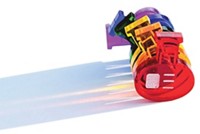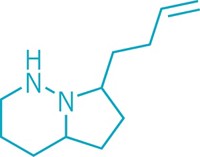Advertisement
Grab your lab coat. Let's get started
Welcome!
Welcome!
Create an account below to get 6 C&EN articles per month, receive newsletters and more - all free.
It seems this is your first time logging in online. Please enter the following information to continue.
As an ACS member you automatically get access to this site. All we need is few more details to create your reading experience.
Not you? Sign in with a different account.
Not you? Sign in with a different account.
ERROR 1
ERROR 1
ERROR 2
ERROR 2
ERROR 2
ERROR 2
ERROR 2
Password and Confirm password must match.
If you have an ACS member number, please enter it here so we can link this account to your membership. (optional)
ERROR 2
ACS values your privacy. By submitting your information, you are gaining access to C&EN and subscribing to our weekly newsletter. We use the information you provide to make your reading experience better, and we will never sell your data to third party members.
Nanomaterials
Newscripts
A greener glitter and respinning NMR tunes
by Leigh Krietsch Boerner
January 23, 2022
| A version of this story appeared in
Volume 100, Issue 3
All that glitters isn’t microplastic

Glitter is sparkly, fun, and the scourge of the earth—ask anyone who’s ever cleaned up after a crafting party for 6-year-olds. But because most glitter is made from the plastic polyethylene terephthalate (PET), it can be a scourge to the environment, too.
“You don’t necessarily want single-use plastic and microplastic particles in the environment,” says Benjamin Droguet, a graduate student studying bioinspired photonics at the University of Cambridge. In addition to the plastic pollution, traditional glitter can also have traces of heavy metals and polymer initiators left over from the synthesis process. Glitter also can’t be recycled, so what’s someone who’s ecoconscious but also fabulous to do? Enter biodegradable glitter.
Led by materials chemist Silvia Vignolini, Droguet and coworkers figured out how to make biodegradable glitter in 1/3 m2 sheets using nanocrystalline cellulose (Nat. Mater. 2021, DOI: 10.1038/s41563-021-01135-8). Cellulose nanocrystals occur naturally in growing plants, such as a tree, Droguet says. The University of Cambridge scientists extract the nanocrystals by adding sulfuric acid, which dissolves amorphous cellulose but leaves behind the crystalline parts. The group then adds the cellulose to water, sprinkles in some salt, and sonicates the suspension. This allows the nanocrystals to form a series of ellipses or spirals, Droguet says. These shapes create the different colors once the researchers dry the suspension on a reusable layer of PET. The nanocrystalline film peels off the PET easily, and the researchers break it up to get the glitter, Droguet says.
Biodegradable glitter does exist already. But although that glitter meets current standards to be called biodegradable, it doesn’t fully break down, Droguet says. Some types of biodegradable glitter use processed minerals to make the sparkle and glues that keep the minerals on the glitter particles. Those materials can negatively impact aquatic life.
Those who wish to shimmer can use the new glitter in a variety of ways, such as in crafts, makeup, and beverages. Newscripts asked Droguet if people break down the glitter in their digestive tracts or if it comes out still sparkly at the other end. His answer: “We did not test this.”
NMR reprise

In November, this Newscriptster wrote about scientists at the University of Michigan using a nuclear nagnetic resonance instrument to make music. A reader wrote in to tell us about an older NMR music project by Walter Bauer, an NMR specialist recently retired from Friedrich Alexander University Erlangen-Nuremberg. Bauer started tinkering with a 500 MHz NMR in 1994, he tells Newscripts via email. Since then, he’s spent many years honing his techniques on arranging music via giant magnet.
Using the 1H signal from the NMR of acetone, Bauer records the difference between the frequency used to excite the sample and the frequency of the signal that acetone gives off. By changing the excitation frequency of the instrument, Bauer can get back a variety of frequencies of these differences, which translate into specific tones. This translation is the same one that happens inside a radio, he says. He then uses a MIDI piano keyboard hooked up to a computer to “play” the NMR signals.
“Thus, an NMR spectrometer is nothing but a very expensive radio device,” Bauer says. The price difference is due to using a very strong magnet, he says.
Bauer has put together many arrangements, often with the accompaniment of other musicians, including opera singer Regina Klepper. His favorite, however, is his NMR rendition of the Beatles’ “Penny Lane,” written by Paul McCartney. Watch his video at youtu.be/Za_raY_1bkQ for a song that will stick in your ears (and possibly in your eyes).
Please send comments and suggestions to newscripts@acs.org.





Join the conversation
Contact the reporter
Submit a Letter to the Editor for publication
Engage with us on Twitter